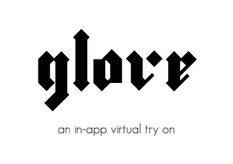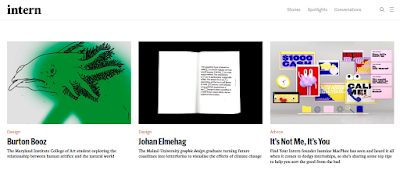6A2
Between Dread and Desire - Suspira Magazine
She is a creative director which can mean many different things.
Life Before Suspira Magazine
Worked in fashion after university, but then eventually completed a Masters in journalism. This led her to her first creative job: social media editor for the W Project, which she contacted and was offered a job for
- unpaid. This led her to help out at an event at the Tate modern which she is proud of. Also created a video series with Caryn Franklin called 'Not a Loss to Women'. [research!]
Although the job was unpaid it meant she gained good experience but she decided since she was working for free she might as well do her own projects. This was when she conceived of the idea to create Suspira magazine - a publication celebrating what she was passionate about: monsters and classic horror.
Biggest challenge: How to pay the bills without breaking her soul.
Content
The horror has a lot of merit, sometimes people don't take it seriously and disprove or make assumptions. It was made to challenge these assumptions - horror isn't always blood and death. It was good to have something to show to people meaning she didn't have to justify why she enjoyed it. The theme is quite niche but there is a huge industry behind it. Fear and sexuality are two of our strongest emotions, a lot of people respond to it.
She showed it to people she trusted and eventually her co-editor persuaded her to do themed issues which she originally pushed against thinking it restrictive. Instead now the themes have added to it's success.
She found work by reaching out to a lot of people she knew, and having now produced one magazine they are a lot more confident in providing work. Some of it she even found on Instagram.
Workflow
In terms of the theme this was decided by intuition and feeling, but after that the case will be built around it/
When the magazine was first being developed it took a long time to refine. The horror style needed to be extracted and translated into a specific aesthetic. Deciding how minimal it would be was most important. Issue 1: 7 months, Issue 2: 5 months.
She works with two different graphic designers and favours working with them face to face. She pushes them in their ideas and they help her to be more realistic and refined. They landed on a style that's quite luxurious, involving some femininity, very refined and consistent. It has to be constrained in order to have long-lasting value.
The Monster Issue
- The issue covered a range of ideas and concepts - one of which was mental health - tackling personal demons, such as anxiety and schizophrenia.
- It also talked about fears and phobias, such as clowns and holes.
- How the genre of monsters in non-existent now.
- Relationship between the monster and the woman - some romantic and sexual tension.
- What the monster represents, can sometimes be misunderstood - e.g. Frankenstein's monster.
- Women sometimes have to repress parts of their personality. The monsters often represent the male, they are hardly ever female.
- A lot of work by women has been buried. E.g. the make-up artists for 'Creature from the Black
- Lagoon' has largely been forgotten in comparison to other male artists.
The Fetish Issue
- Intersection of horror and sex.
- Grainy, sexy, Polaroid photography, quite ridiculous.
- Typefaces: Stanley, Grotesque.
Print
Print is a huge part of the experience,
hard to imagine as digital. If it was to go digital there would have to
be new ways of making it immersive.
Decided to make the
cover very tactile and the type is embossed. The paper is very light
weight which means that the publication can be carried around. It was
decided that things like this would be kept consistent in further issues
- whilst still having quite a bit of variation in other aspects of the
design.
They struggled with the printing, and a delay caused them to have to cancel an event. However this can happen and they made the best of it.
Publishing
Was supported by another magazine made under the same publishing house, it's important to have these support systems and networks to ask for help. Collectives like Stack also promoted them, creating a lot of exposure.













































